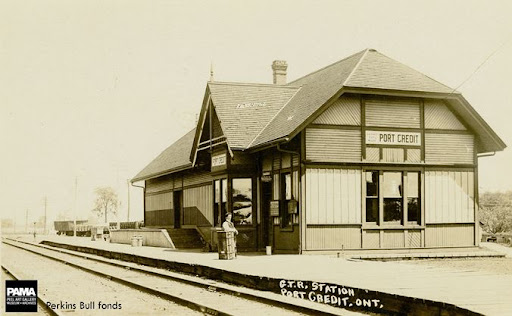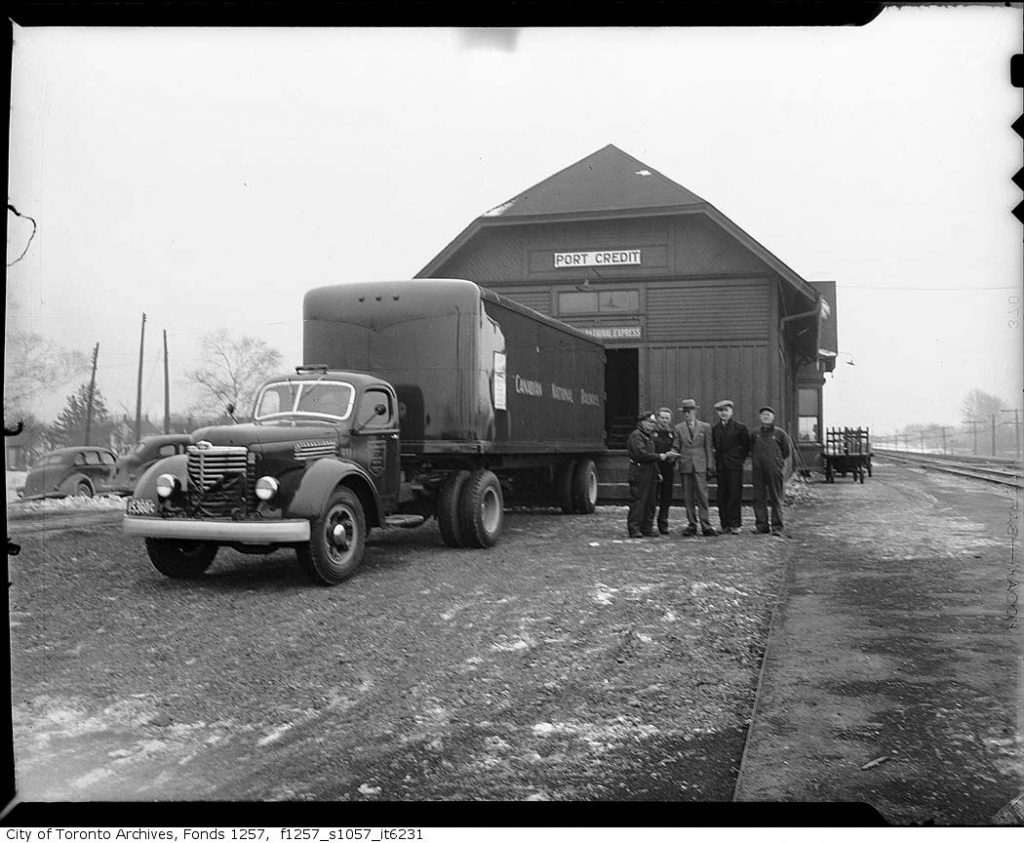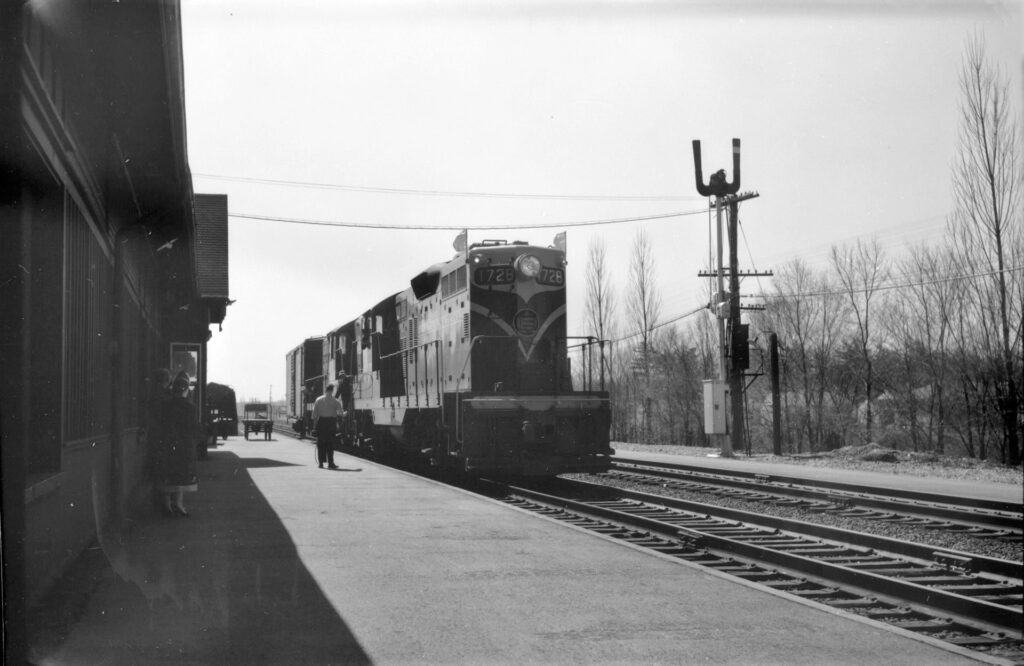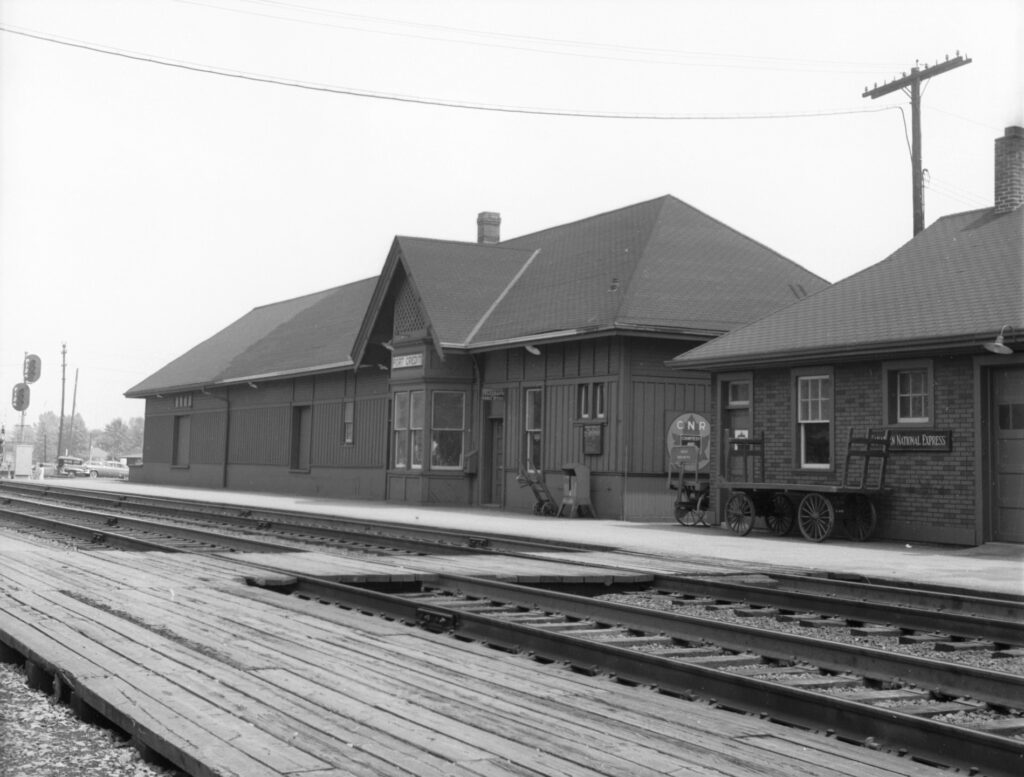Summary
The first train station at Port Credit was built by the Great Western Railway in 1855 while its construction was progressing towards Toronto. While no photos are known to exist of this station, it was likely a small wood frame structure identical to others built elsewhere by the Great Western around the same time. The first train arrived in Port Credit later the same year, and by 1861 a total of eight passenger trains stopped in Port Credit on a daily basis, increasing to ten by 1867. The Great Western Railway began double-tracking the segment between Toronto and Hamilton in 1878 to allow for a higher volume of trains, but it would not be completed until many years later in 1896. By this point the line through Oakville was owned and operated by the Grand Trunk Railway, who gained control of the Great Western in 1882. Train service to Port Credit had increased even further to 13 trains per day by 1886.
A new station was constructed in Port Credit by the Grand Trunk shortly after efforts on double tracking had wrapped up. This one would have been significantly larger in size, likely to reflect the needs of the growing population of Port Credit. It was a rectangular structure with a board-and-batten exterior and a Jerkinhead roof. A gable was located above the operator’s bay, which provided visibility from the station agent’s office. Soon afterward, the Canadian Pacific Railway would gain trackage rights over the Grand Trunk from Hamilton to Toronto. These trains would use a combination of equipment from Canadian Pacific, Toronto, Hamilton & Buffalo, and the New York Central Railroad, but they were piloted by Canadian Pacific crews over this section. Service by Canadian Pacific through Port Credit began on May 30th, 1897, but their trains would initially bypass Port Credit Station altogether. After the financially ailing Grand Trunk was merged into Canadian National in 1923, Canadian Pacific would be allowed to stop at some stations including Port Credit. Service would increase to 38 trains per day by 1941, 13 of which belonged to Canadian Pacific.
The popularization of automobiles in the early 20th century resulted in a decline in passenger ridership. This was further affected by the completion of a four-lane divided highway initially called the Middle Road, now known as the Queen Elizabeth Way between Toronto and Hamilton. It ran parallel to the railway approximately 1.6 kilometers north of the station and served many of the same communities. Port Credit’s position as a bedroom community of Toronto largely kept commuter service intact, though it would decline to just 13 passenger departures per day by 1961. GO Transit was formed to take over the remaining commuter service between Pickering and Oakville in 1967, after which the CN station was promptly abandoned. It would ultimately share the same property as the Port Credit GO Station which was located to the immediate west of its predecessor. The former CN station deteriorated for some time until it was torn down in 1975 to make way for more GO Station parking.
Condensed Station Info:
| Location: | Served By: | Current State: | Date Built: | Date Demolished: |
| Hurontario Street | GWR (1855 – 1882) GTR (1882 – 1923) | Demolished (Both) | 1855 (First) 1896 (Second) | 1896 (First) 1975 (Second) |





